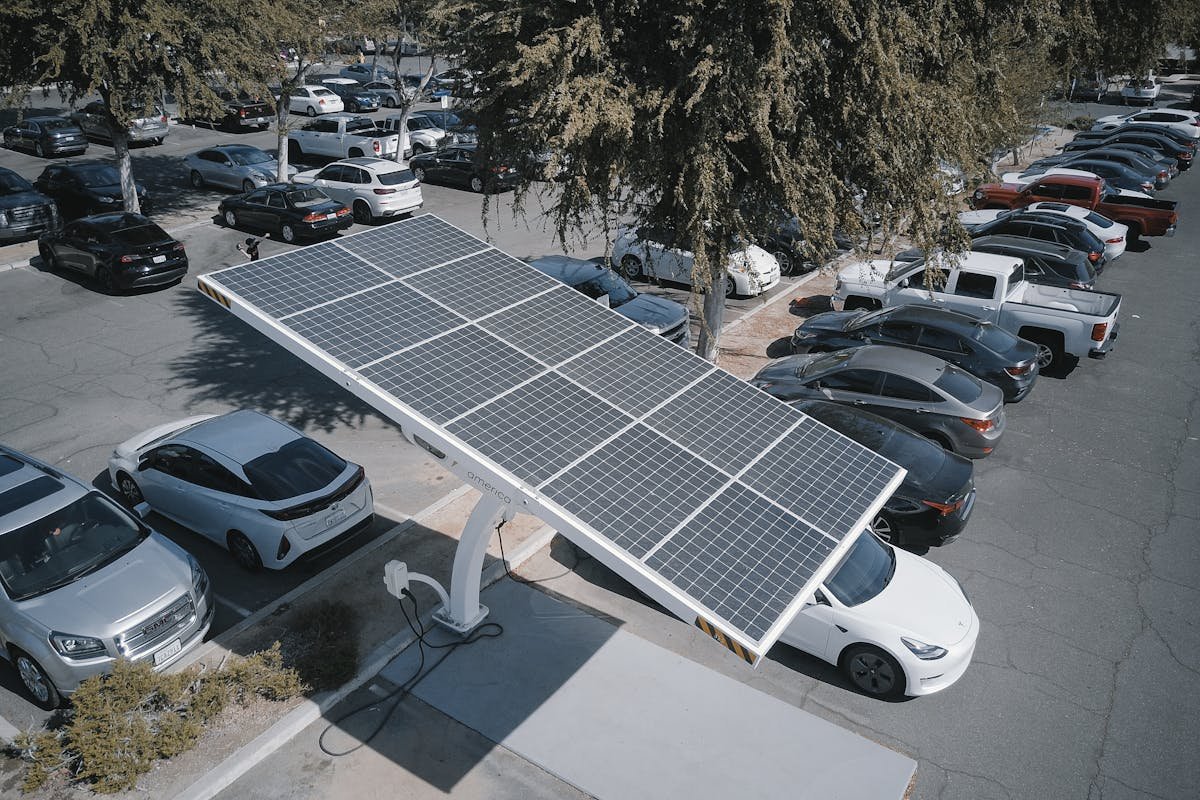Electric Vehicle Charging Station Working Principle
Transportation & Urban Development / Date: 04-29-2025

Electric vehicles bring a new and fresh air to the world of vehicles with their eco-friendly structures, silent operation and the ability to be charged with an electric cable. If you are looking for answers to questions such as how charging stations work, what are their working principles, and how their capacities are determined, you can find all the information in this article.
As electric vehicles increase their popularity worldwide, electric vehicle charging stations continue to spread and improve their service quality. The most important factor that determines the service of electric vehicle charging stations comes from their working principles. The working principle of an electric vehicle charging station consists of taking electricity from its source and transmitting it to the battery of the electric vehicle via a cable.
Although the working principle is basically this simple, there are factors that affect speed and efficiency and vary according to the capacity of the charging stations. Before benefiting from the electric vehicle rental service, it is useful to read this comprehensive article about the working principle of an electric vehicle charging station.
What is an Electric Vehicle Charging Station?

Electric vehicle charging stations are stations where the batteries of electric vehicles (EV) and plug-in hybrid vehicles are charged. Electric vehicles, which have zero emissions and a low carbon footprint , are charged by charging their batteries with an electrical source instead of traditional fuels. Electric vehicle charging stations, which are open to the public, individual or fleet use, provide the electricity they need in two different current types: Alternating Current (AC) and Direct Current (DC). The charging station operating principle is shaped by these currents.
Working Principle of Charging Stations
Charging stations work as an interface that allows the power it receives from the energy source to be transferred to the battery of your electric vehicle. The basic working principle of the charging station is explained as converting the electricity it receives from the network into a form compatible with the batteries of your electric vehicle. The charging station allows your vehicle to be charged with this method. A cable compatible with your vehicle is used for energy transfer.
Essentially, every battery can be charged with direct current (DC). However, the electricity source taken from the grid is alternating current (AC). Therefore, an AC/DC converter is used to use electrical power. DC charging stations can make this conversion very quickly, and thus an electric vehicle battery can be charged in half an hour.
Charging Station Types and Features
It is possible to count electric vehicle charging stations as alternating current (AC), direct current (DC) and home electric vehicle charging stations. It is also possible to name them as home charging stations, public charging stations and fast charging stations. Accordingly, the types and features of electric vehicle charging stations are explained as follows:
- Fast Charging Stations: Fast charging stations mostly use DC type charging. You can charge your vehicle in an average of 30 minutes at these charging stations. Despite the fast service they offer, fast charging stations are the most expensive group among charging station types. When calculating the cost for your electric vehicle, you can also consider the issue of charging fee calculation .
- Public AC and DC Charging Stations: Public charging stations can be found in areas such as shopping malls, supermarkets, and open parking lots. You can receive service from both AC and DC charging types of these stations. The most important advantage of public stations is that you have the chance to find a charging station while on the road or close to where you live/work.
- Wallbox Stations Offering Home Charging: You can also charge your electric vehicle at home from the mains.
Connection Types Used in Charging Stations
When charging your vehicle at charging stations, it is very important that the plug of your vehicle and the outlet of the charging station are compatible with each other. To ensure this, it is necessary to have information about the connection types of the charging stations. There are four types of connections at charging stations, two types of AC and two types of DC. These connection types and their features are as follows:
- AC Type 1: AC Type 1, a single-phase connection type, allows you to charge your vehicle at a speed of up to 7.4 kW. Of course, this speed may vary depending on your battery capacity and the power of the charging station. This connection type is widely used in American vehicles.
- AC Type 2: This connection type is referred to as three-phase plugs and offers faster charging. While the charging power for the home is 22 kW with the AC Type 2 connection, it can go up to 43 kW at public charging stations. AC Type 2 is accepted as the standard for European and Asian electric vehicles.
- CHAdeMO: CHAdeMo, one of the DC charging types, is among the systems that offer fast charging. With this connection type, charging up to 100 kW is possible. It is widely found in Asian vehicles.
- CCS: This plug is an improved version of the AC Type 2 for fast charging. Supporting AC and DC charging, CCS offers charging power up to 350 kW.
The Future of Charging Stations
As the advantages of electric vehicles increase, EV usage also increases. This increases the need for electric charging stations and causes charging stations to become widespread. The prominent headlines regarding the future of charging stations around the world are as follows:
- The number of charging stations is planned to increase in proportion to the number of electric vehicles. The number of charging stations is expected to reach 210 million worldwide by 2035.
- It is expected that charging times will be shorter and electric vehicles will be able to be used at much longer ranges thanks to developing EV technologies. It is thought that ultra-fast charging stations that can charge the entire battery in a few minutes may be implemented in the near future.
- Studies are underway to open wireless charging stations for electric vehicles. The freedom of wireless charging increases ease of use by allowing electric vehicles to charge where they are parked.
- In order to further contribute to the environmentally friendly nature of electric vehicles, studies are being carried out to enable the use of energy obtained from renewable sources such as solar energy in charging stations.
- It is planned to bring user-friendly and innovative digital payment options to charging stations.
- Developments such as increasing the Charging Stations Map and similar guidance applications, allowing electric vehicle owners to have information about how many and in which locations there are charging stations on their route, and instantly accessing information such as the capacities and speeds of charging stations, are expected to be implemented in the near future.
Looking ahead, the integration of smart technologies into electric vehicle charging stations promises to further revolutionize how we charge EVs. These smart charging systems will not only optimize the charging process based on electricity demand and grid capacity but will also enable dynamic pricing, allowing users to charge their vehicles during off-peak hours at lower costs. Additionally, advancements in connectivity will allow charging stations to communicate with vehicles and energy providers, ensuring efficient energy distribution and helping to balance the load on power grids. This intelligent infrastructure will play a crucial role in supporting the growing number of electric vehicles worldwide while promoting sustainable energy use.
Moreover, as electric vehicle adoption accelerates, the emphasis on interoperability and universal standards for charging stations will become increasingly important. Efforts are underway globally to harmonize charging protocols and connectors, ensuring that drivers can easily access any charging station regardless of their vehicle make or model. This will enhance convenience and accelerate EV adoption by eliminating compatibility barriers. Combined with innovations like renewable energy-powered stations and wireless charging, the future of electric vehicle charging infrastructure looks set to be more efficient, accessible, and eco-friendly than ever before.
Follow Us
Newsletter
Subscribe to our newsletter to stay updated with our latest news and offers.
We respect your privacy.Trending










